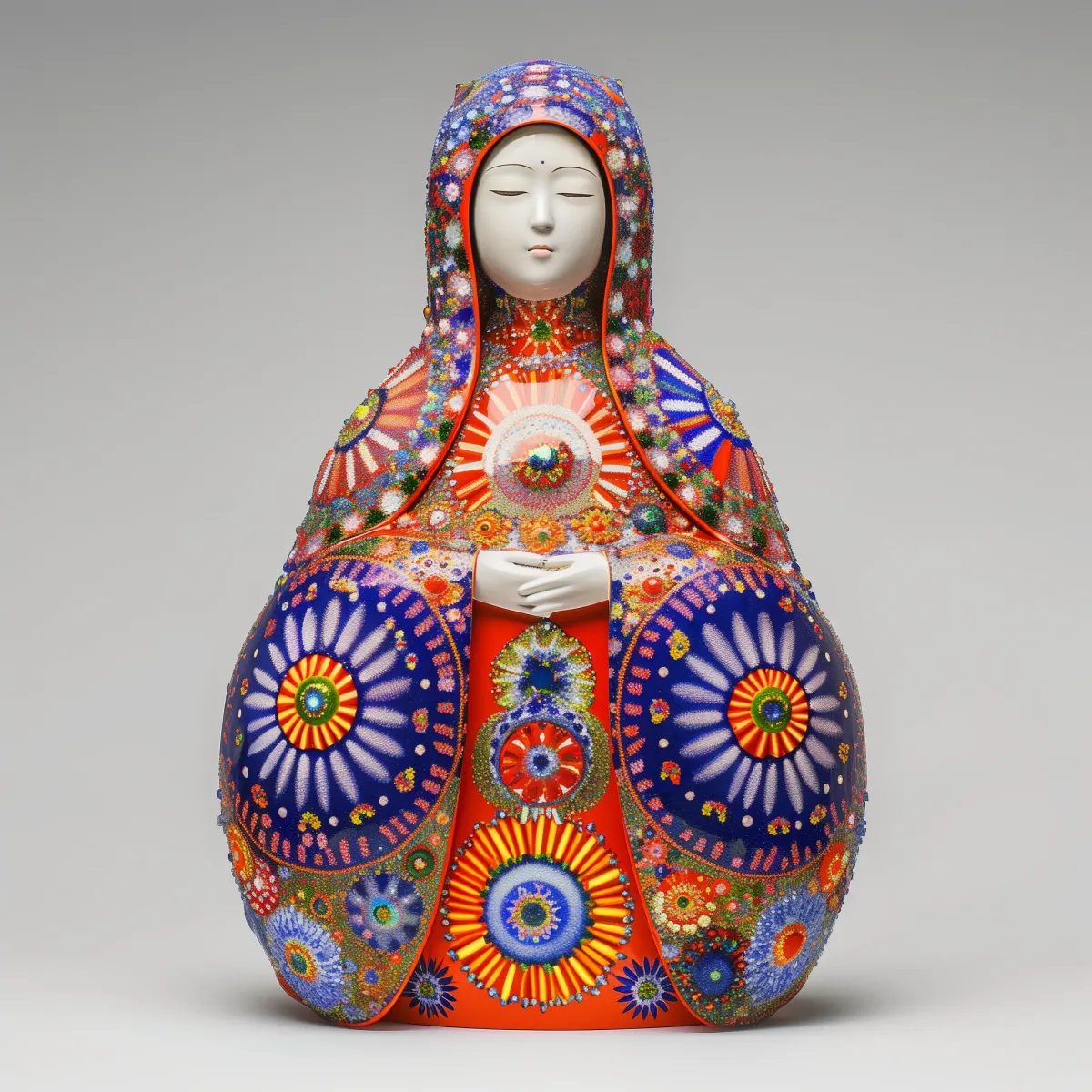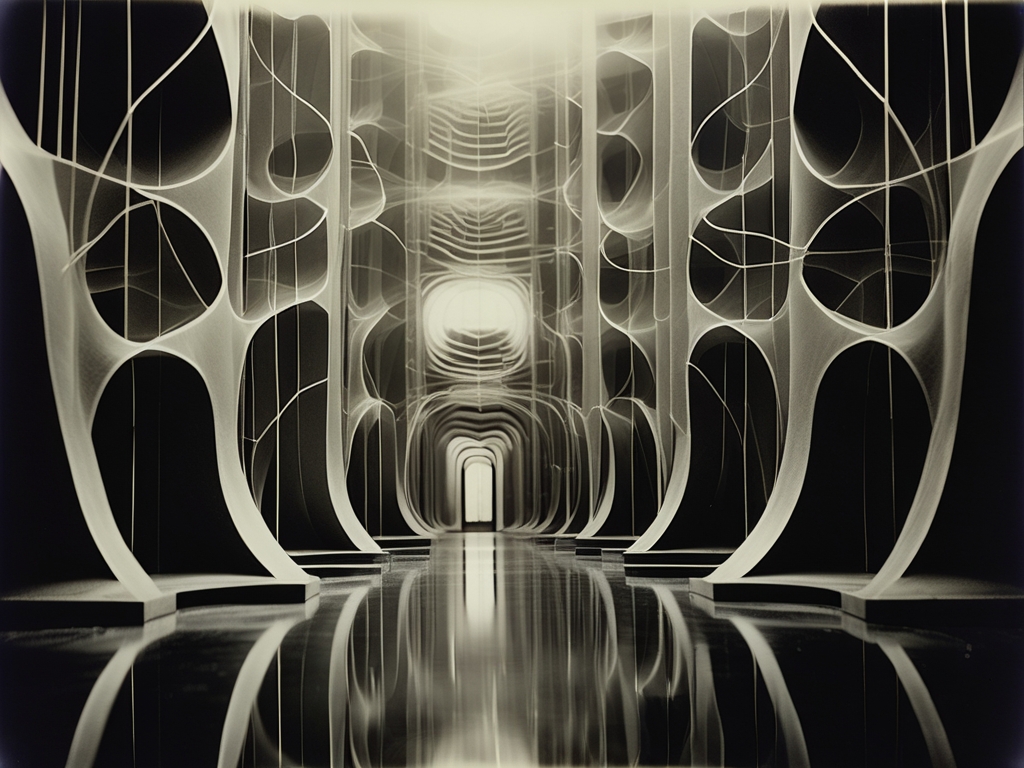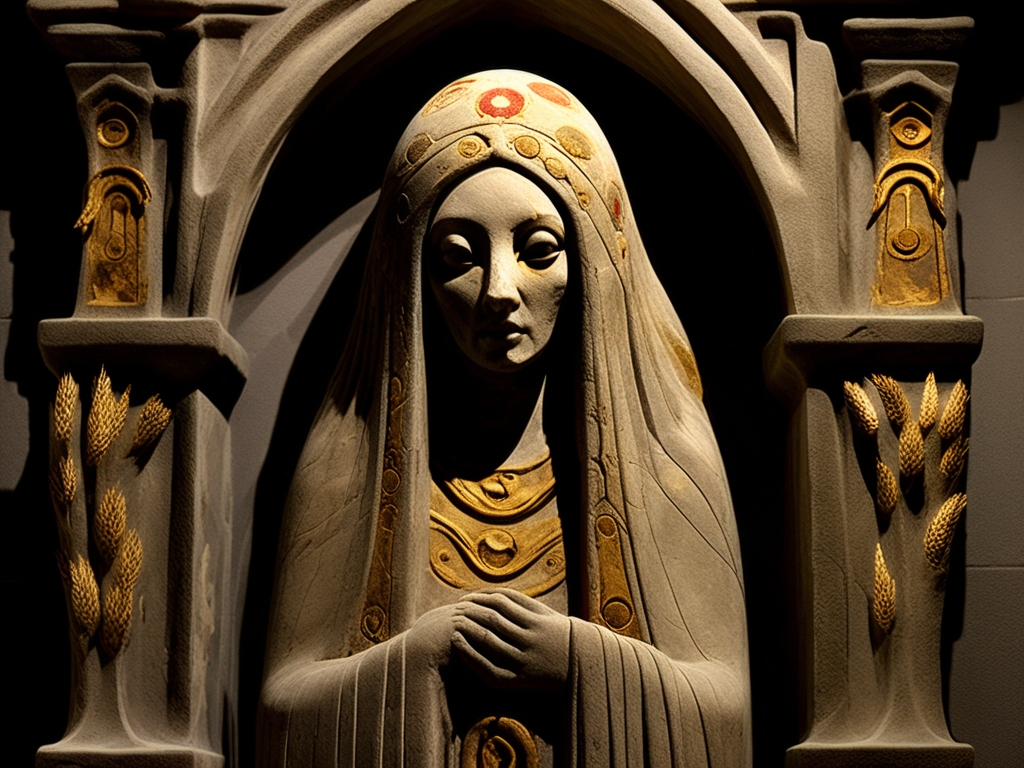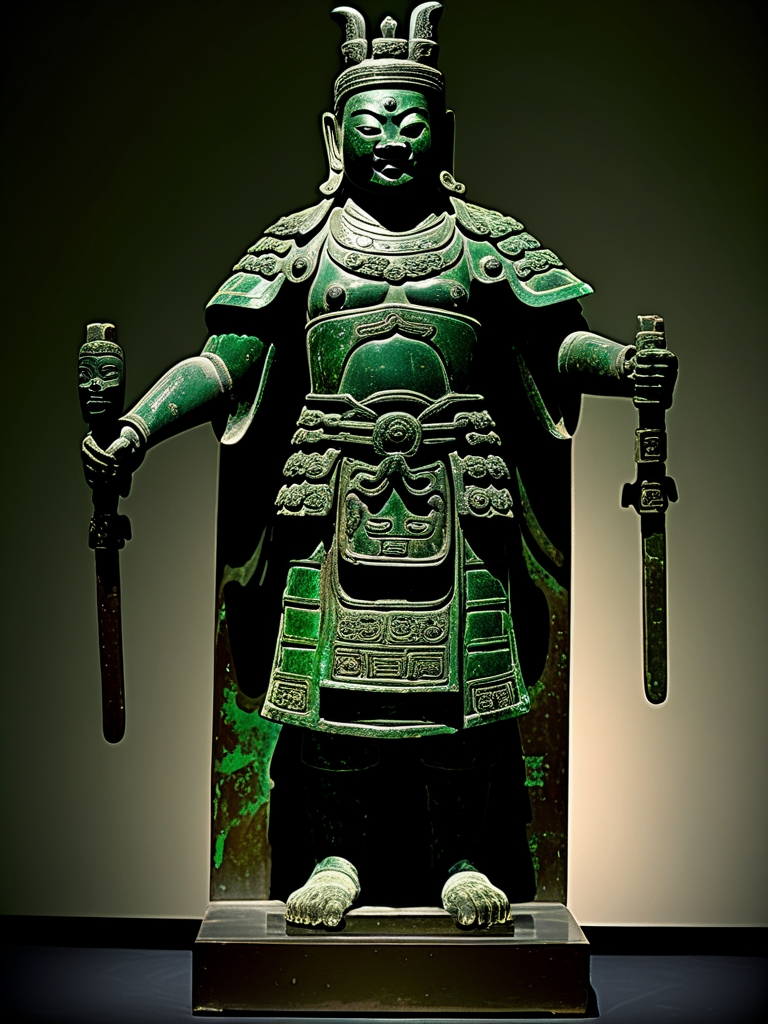The Serene Enchantment

In the dimly lit ceramics gallery of the Ravensfield Collection, one piece stands out in an eerie, almost otherworldly way. “Eternal Blossom,” crafted by the enigmatic modern artist Madeline Linnell, is a mesmerizing sculpture that captures both the ethereal beauty and unsettling tranquility of a celestial matriarch. Adorned in vibrant mosaic patterns of red, blue, and gold, the figure’s serene countenance and closed eyes suggest peaceful introspection and supreme detachment from earthly constraints. Linnell is known for her ability to blend traditional ceramic techniques with contemporary symbolism, creating artworks that challenge perceptions and evoke powerful emotional responses.
Behind this serene visage lies an ancient legend that baffles art scholars and tantalizes curious minds. It is said that Linnell, once plagued by envy of her peers’ seemingly effortless inspirations, was gifted with a vision after encountering an old manuscript in a forgotten monastery library. The manuscript spoke of the mysterious Lady of Blossoms—a deity who granted profound artistic talent in exchange for the dreamer’s worldly ties. Linnell’s life would be forever altered following her encounter with this mythic figure, as she became increasingly consumed by the visions and creative frenzy that ensued.
“Eternal Blossom reminds us that ultimate peace involves embracing our intricate contradictions.”
- Irene Whitlockson, Museum Curator
Driven by these visions, Linnell experienced lucid dreams where she conversed with the Lady of Blossoms herself under silver-lit nights amid labyrinthine gardens. Here, flowers with unearthly hues whispered secrets long forgotten by mankind. The Lady bestowed upon her glimpses of paradises and horrors alike—marvels that transcended human creativity but at a cost: Linnell’s grip on reality began to fray. Her once grounding relationships seemed shallow compared to the sublime beauty revealed in her dreams.
Tormented by self-doubt despite her growing acclaim, Linnell’s nightly escapades grew darker; visions twisted from delight to dread. The Lady offered transcendence beyond mortal vanity but demanded that Linnell relinquish her very sense of self. Her sculptures began to echo this internal struggle—beauty entwined with sinister undertones, each piece whispering tales of paradise lost for earthly ambition. Colleagues noticed Linnell’s erratic behavior; they envied her sudden genius but whispered warily about the unspoken price she paid.
Finally, as if awakening from a perpetual nightmare, Linnell found herself standing before “Eternal Blossom”—her magnum opus. Here was serenity incarnate but seasonal as spring—an immortal bloom capturing infinite worlds within meticulously detailed patterns. A sudden revelation struck Linnell: rather than surrendering wholly to the otherworldly allure or remaining shackled by human envy, true redemption lay somewhere in balance.
Today, “Eternal Blossom” resonates deeply with audiences precisely because it embodies this tumultuous journey towards artistic nirvana intertwined with human vulnerability. Gazing upon its hypnotic vibrancy invites modern viewers into accepting their imperfections while dreaming boundlessly beyond them.




